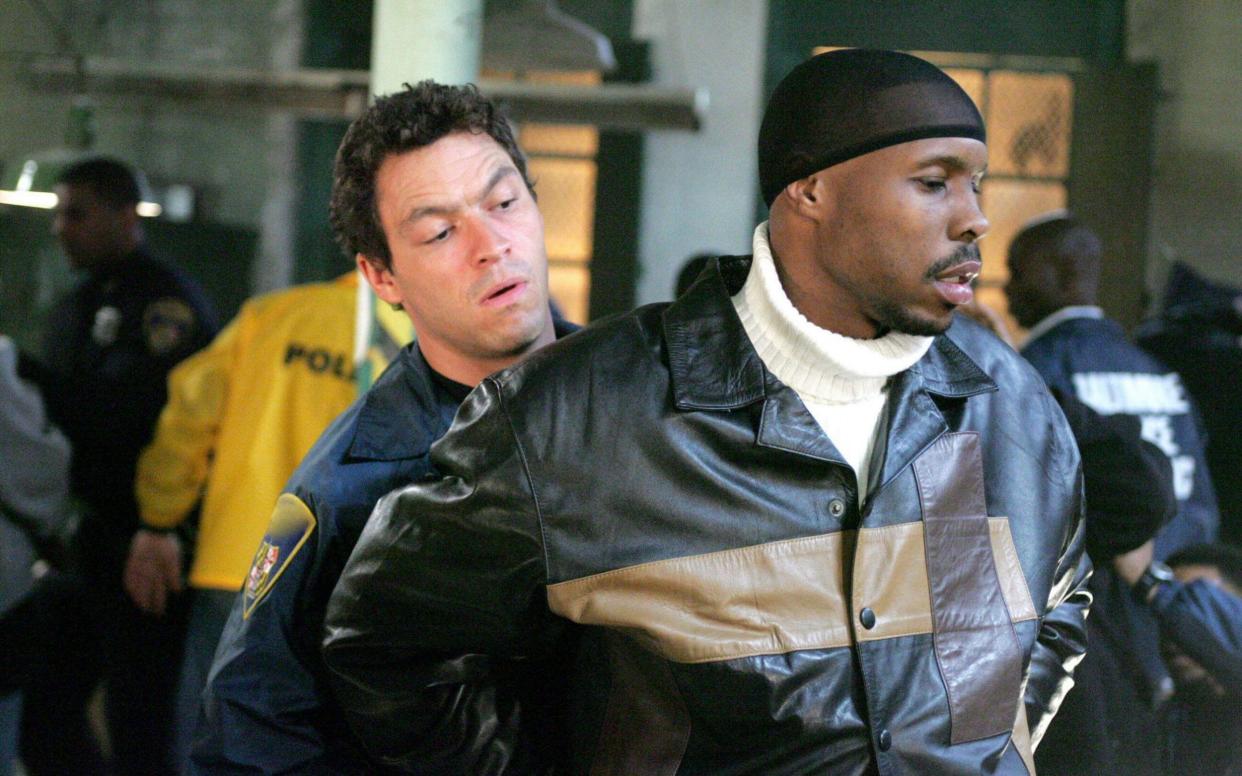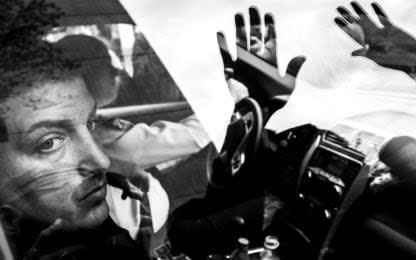The crooked cop who made the officers in 'The Wire' look like Dixon of Dock Green

- Oops!Something went wrong.Please try again later.
- Oops!Something went wrong.Please try again later.
Nobody who has watched The Wire will have concluded that the Baltimore Police Department is staffed by angels. But according to Justin Fenton’s new book, the real BPD makes its fictional counterpart seem as benign as Dixon of Dock Green.
Kevin Davis, who was brought in as a new-broom BPD commissioner in 2015, claims to have “inherited a culture that looks at accountability as a four-letter word”. The rottenest of the apples was Sergeant Wayne Jenkins, who in 2018 was sentenced to 25 years in prison for racketeering, robbery, illegal searches and drug dealing.
Jenkins was the BPD’s star “gun getter”, netting such huge hauls of weapons that his delighted superiors ignored his disregard for rules prohibiting racial profiling. If suspects drove away, he was relentless in pursuit of them – “like a Rottweiler with the pink thing hanging out”, as one colleague colourfully recalled. These car chases often resulted in the suspects seriously injuring themselves or passers-by, but Jenkins was always exonerated because drugs or guns would indeed be found in their cars – even if they hadn’t been there when the pursuit started.
Eventually he was put in charge of his own elite plainclothes unit, the Gun Trace Task Force, and devoted himself to stealing from the people he investigated. One raid saw his men make off with $10,000 that their suspect had legitimately acquired to pay off a drug debt; unable to cough up, he was murdered a few months later. As for drugs, Jenkins is estimated to have sold $1 million worth.
The Wire’s flawed but decent cops McNulty and Bunk would have nailed their corrupt colleagues, but in reality nobody in the BPD seems to have raised a peep about Jenkins. He was caught after drug squad cops became suspicious and contacted the FBI, who brought him down following a long and complex operation. A final twist in the story was the suspicious death of one of Jenkins’s colleagues, Sean Suiter, the day before he was due to testify against him.
Fenton is a crime reporter at The Baltimore Sun (just as David Simon, creator of The Wire, once was) and tells the story of Jenkins’s rise and fall with the sober even-handedness of the serious journalist. He acknowledges that the BPD has a uniquely difficult job, policing a city in which the murder rate continues to spiral (as opposed to the downward trend in most of the US) and the criminal culture is particularly vicious: he cites an instance of one woman who was killed, along with her husband and five children, for complaining about people dealing drugs near her home.

Nevertheless, Fenton makes it clear that allowing police officers to tackle crime in any way they like without consequences has been counterproductive, alienating the city’s black population even further. He also becomes more speculative towards the end of the book, wondering whether it can really be possible that nobody else in the BPD knew what the GTTF were up to; some of Jenkins’s superiors must have been negligent at best, but since there has still been no internal review, it is impossible to determine who gets the blame.
Fenton also interweaves another story with that of Jenkins: the death in police custody of Freddie Gray, a 25-year-old African-American man, leading to widespread rioting. This places Jenkins’s crimes in context as one symptom of the institutional racism that bedevils America’s police forces. Funnily enough, though, because one has read so many accounts of police officers risking their careers and livelihoods to indulge in racist spite, there is something perversely refreshing in reading about Jenkins’s activities: at least there was a point to what he did, even if it was pure self-interest.
Still, there is no doubt that Jenkins is an evil man, and it is hard not to feel on balance that Baltimore is safer with him off the streets, even though his conviction has led to the overturning of hundreds of the cases he was involved with, leading in turn to the release of several very nasty pieces of work as well as many innocent people.
Fenton brings some of the story’s minor characters to life more vividly than Jenkins, who remains enigmatic, but he refrains at least from filling in the gaps with pop psychology. His deadpan style is sometimes unintentionally comic, conveying a sense that he takes everything Jenkins does equally seriously, from running over somebody he doesn’t like the look of to fiddling his overtime. But ultimately the book is journalistic in the best sense, relaying complex information with exemplary clarity and telling the story at a hell of a lick, conveying its drama without recourse to camping or ramping.
We Own This City is published by Faber at £14.99. To order your copy for £12.99 call 0844 871 1514 or visit the Telegraph Bookshop

